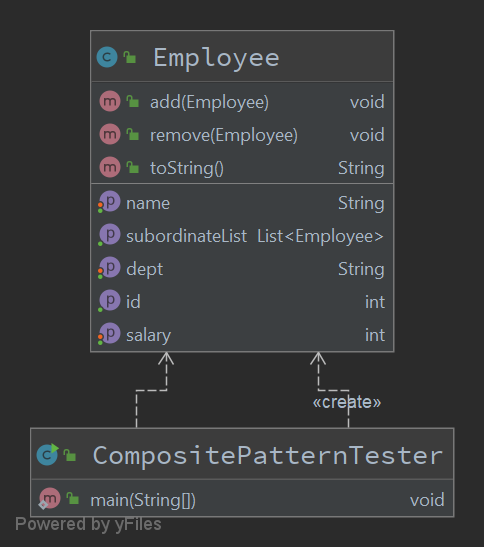1
2
3
4
5
6
7
8
9
10
11
12
13
14
15
16
17
18
19
20
21
22
23
24
25
26
27
28
29
30
31
32
33
34
35
36
37
38
39
40
41
42
| package individual.cy.learn.pattern.structural.composite;
/**
* @author mystic
*/
public class CompositePatternTester {
public static void main(String[] args) {
Employee ceo = new Employee(10000, "Adam", "CEO", 70000);
Employee headSales = new Employee(20000, "Robert", "Head Sales", 20000);
Employee headMarketing = new Employee(30000, "Michel", "Head Marketing", 20000);
Employee salesExecutive1 = new Employee(20001, "Richard", "Sales", 10000);
Employee salesExecutive2 = new Employee(20002, "Rob", "Sales", 10000);
Employee clerk1 = new Employee(30001, "Laura", "Marketing", 10000);
Employee clerk2 = new Employee(30002, "Bob", "Marketing", 10000);
ceo.add(headSales);
ceo.add(headMarketing);
headSales.add(salesExecutive1);
headSales.add(salesExecutive2);
headMarketing.add(clerk1);
headMarketing.add(clerk2);
System.out.println("ceo = " + ceo);
System.out.println();
// print ceo immediate subordinate
ceo.getSubordinateList().forEach(System.out::println);
System.out.println();
// print ceo immediate subordinate's immediate subordinate
ceo.getSubordinateList().stream()
.flatMap(ceoSubordinate -> ceoSubordinate.getSubordinateList().stream())
.forEach(System.out::println);
}
}
|
